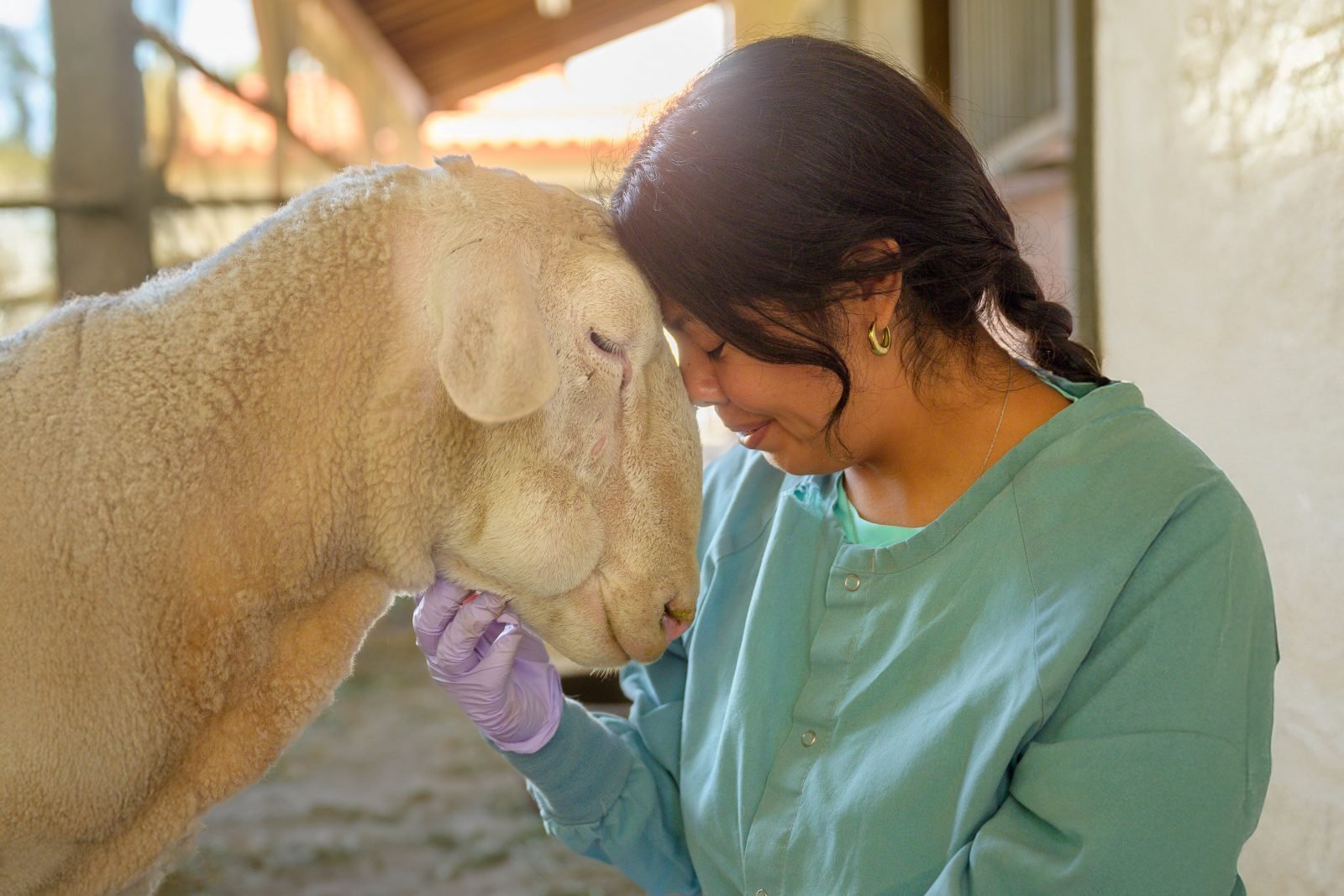He was only about a day old, one of many newborn calves brought to New Holland Auction in Pennsylvania that day. These “byproducts” of the dairy industry, which must keep cows pregnant to keep them lactating, are sold to be slaughtered for veal or raised for cheap beef. Small and hobbled by leg deformities, Valentino was considered an unmarketable “defective” and would likely have been left to a slow death.
Instead, his disability became his salvation. Since Valentino was in such bad shape, Kelly was allowed to take him. She brought him back to her horse sanctuary, to receive care and veterinary attention. Though splints and physical therapy were recommended for Valentino’s front legs, the vets Kelly consulted had never before seen the type of deformities present in his hind legs. They didn’t know how to address the condition. The option of euthanizing Valentino was presented. Despite his health problems, however, Valentino was a happy calf. Seeking further help for him, Kelly reached out to Farm Sanctuary.

With access to Cornell University Hospital for Animals, which employs some of the country’s top large animal vets, our shelter in Watkins Glen, NY, offered Valentino the best chance of survival and health. We agreed to welcome him to the shelter but first brought him directly to the hospital, so we could immediately begin treating his ailments.
We quickly discovered that Valentino’s health challenges went far beyond his legs. Most problematic was the presence of vagal syndrome. In normal, pre-weaning calves, drinking milk stimulates a closure of the esophageal groove. In calves with vagal syndrome, however, the groove fails to close; this allows milk to enter the rumen, where it ferments and causes painful bloating. Valentino arrived at Cornell extremely bloated and also seriously underweight.
Because of his condition, he has already been weaned off milk and started on hay and pelleted feed, supplemented with electrolytes and sodium bicarbonate. Thanks to this change, he is feeling much better. Vets have been unable to identify the underlying cause of his vagal syndrome, so we continue to watch and hope that he develops normal rumination on his own.
Valentino also arrived at the hospital with pneumonia — since treated — and, of course, his leg ailments. He has malformed hock bones and mild contracture of the digital flexor tendons in all four legs. Due to his small size, his vets also suspect he may have dwarfism.
Valentino’s leg issues will likely become problematic. Though he is currently getting around fine, the deformities may worsen as he grows. Because of the great size of cows, even dwarf cows, leg issues pose a serious threat to overall health and surgical options are extremely limited. It is possible that, even with the best veterinary treatment available, we may lose Valentino if his condition cannot be corrected. But we’re going to fight for him as long as he needs us to. Right now, Valentino is safe and loved. We’re going to give him every single happy day we can.






